A Coffee with the Doctor, Doña Mencía, Córdoba
Zagan the motorhome’s still still (N37.54645, W4.35271). He’s not shifted in days from his parking place by the via verde running alongside the 5000-person town of Doña Mencía in the province of Córdoba, southern Spain. A time-lapsed video of our time here would have shown us arrive last Wednesday to join 3 or 4 other vans, followed by a whirlwind swell of 25 to 30 motorhomes (mostly Spanish) and seemingly every car and coach from miles around, flowing in and out under a cloud of dust over the past few days before settling back down to 5 or 6 vans today. The frenetic long weekend rush is over, and everyone but us has gone back to work and school. Ju’s not been able to move around much with her damaged knee, but luckily everyone came to us, and from the windscreen we were entertained by multi-generation families BBQing, football kicking, supping ice-cooled drinks and razzing up and down on the pedal-bike-car wotsits rented out by the nearby shop.
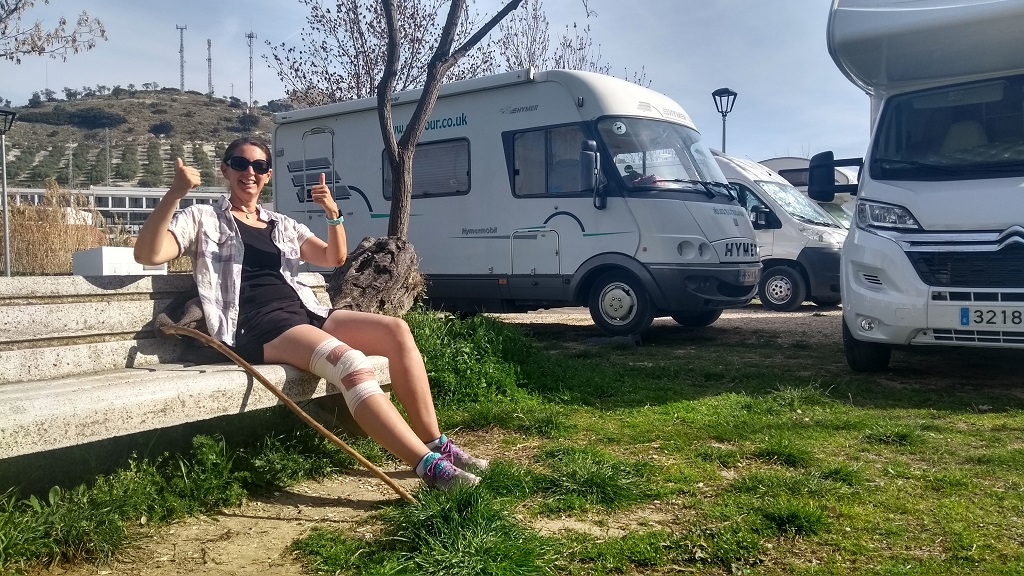
In over four years of travelling we’ve not been to a doctor abroad, until last week. We’re fairly careful about what we eat and drink, and what activities we do, but in the end our health has been down to luck. Whenever we meet folks who have needed to get medical attention abroad I’m all ears as to how they handled it, and the stories have been largely (almost universally) positive, as has ours. When Ju fell while running last week, she sheared a hole in her knee. Nothing terrible (she could easily have broken it), but not great either and it would have been stitched up but for the fact the doctors found a larger hole behind the outer one, so wanted to leave it open to let blood out. We’ve now been to the centre de salud two more times after the initial visit, for the wound to be checked and re-bandaged, and have had exceptional treatment every time.
On the first two visits we presented our EHIC and were seen there and then. The longest we’ve had to wait was about 10 minutes. No money was requested, very few questions about who we were. It even transpired as we don’t have a Spanish ‘health care number’ we don’t ‘fit’ into their computer system, so they aren’t going to make any kind of claim on EHIC (I have no idea how this system works in practice), so we were being treated entirely at the expense of Andalusia. As our Spanish is very, very basic, we relied on Google Translate for the first couple of visits, which requires patience for the native speakers to use. They showed zero sign of upset that we didn’t speak Castilian and we could communicate really well. We took our MiFi so we had easy and fast internet access in the health centre and could just speak into our phones which then read out what we’d said in Spanish, and vice versa, a fantastic app. On our last consultation this morning, the doctor spoke great English and advised us the wound was healed up enough we could self-medicate now using iodine from the pharmacy opposite, Ibuprofen and the rest of a course of antibiotics (which cost us less than €4).
As we walked (slowly and relieved) away from the medical centre, a shout of “Julie!” turned us around to see Paco, our English-speaking doctor, inviting us to join him for his coffee break. Free motorhome parking, free services, free medical treatment, free access to the beautiful via verde and now Paco refused to take our money for drinks. Bewildering this is for me, the kindness and generosity shown to us foreigners, complete strangers. Over a cafe solo (espresso) I took full advantage of the opportunity to get some free information too, asking Paco all my latent questions about olives. Yep, olives, I’ve been running through ’em for miles, and thinking a thousand questions as I jogged about.
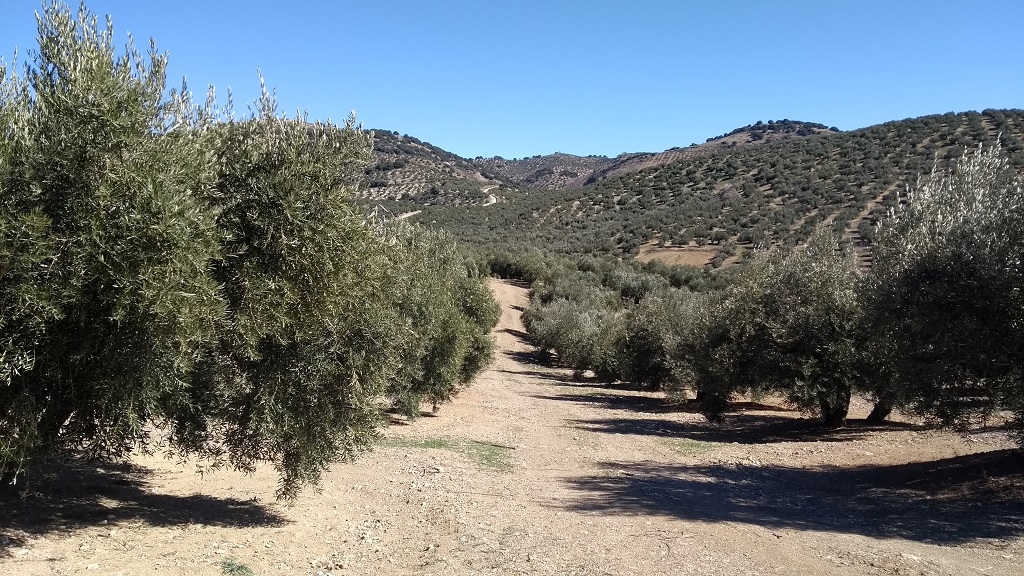
There are millions upon millions of olive trees down here and luckily for me it turned out Paco’s wife has about 12,000 of ’em handed down from her parents. Here are a select few of the endless questions I had:
- Q: Do olive trees need water? A: Nope. Incredibly, all but the most modern breeds of tree need no water. They can live through several years of drought (although they’d not produce fruit). If it wasn’t for olives, Paco said huge areas of Southern Spain would be desert.
- Q: How much do you get from a single tree’s olive harvest? A: It depends on the market, the type of olive, the season, the size and maturity of tree and so on, but roughly €30 a tree. From this you have to deduct all of your costs. You’re actually paid for the volume of oil you produce too, not the weight of fruit.
- Q: How do you pick the olives? A: Using a vibrating fork which shakes the individual branches (we’ve seen these in use in Italy). For younger trees a machine grabs the trunk and shakes the whole tree, but this can damage older trees. Paco told us trees used to be planted in a cluster of 3 or 4 trees (I’d assumed a single tree split at the base, but this isn’t the case). Newer trees are planted individually making the ‘whole tree’ shaking method easier.
- Q: How old are the trees? A: They have some new trees which aren’t old enough to produce fruit, but many are maybe 200 or 300 years. A few, which they called ‘grandfather trees’ were over 750 years old, around the time of Genghis Khan, incredible.
- Q: Who does all the work on the trees (there are 300 million of ’em in Spain, and they all need pruning, weeding, insecticide and harvesting)? A: 90% of the work’s done by the locals, and they work on the trees for all but 2 weeks of the year.
- Q: Who do you sell your olives to? A: Normally a co-operative, where their olives were mixed with everyone else’s, but Paco and his wife were looking into creating more of their own high-quality oil in future.
It was clear the trees meant something to Paco and his wife, something more than money. Olives and olive oil are a kind of blood to this area of Spain I think, they keep it alive, both in the sense they hold the land together, and in the sense they keep rural communities thriving. He told us about new species of tree which are small and planted in lines like vines. They produce fruit more quickly and can be harvested by a machine which runs over them. They need water though, and live much, much shorter lives, and he and his wife had opted to keep with the traditional ways. Olives, I think, were in his family’s blood, and given how sustainable they are compared with dairy fats, for example, I’d hope his family’s trees have a bright future ahead of them.
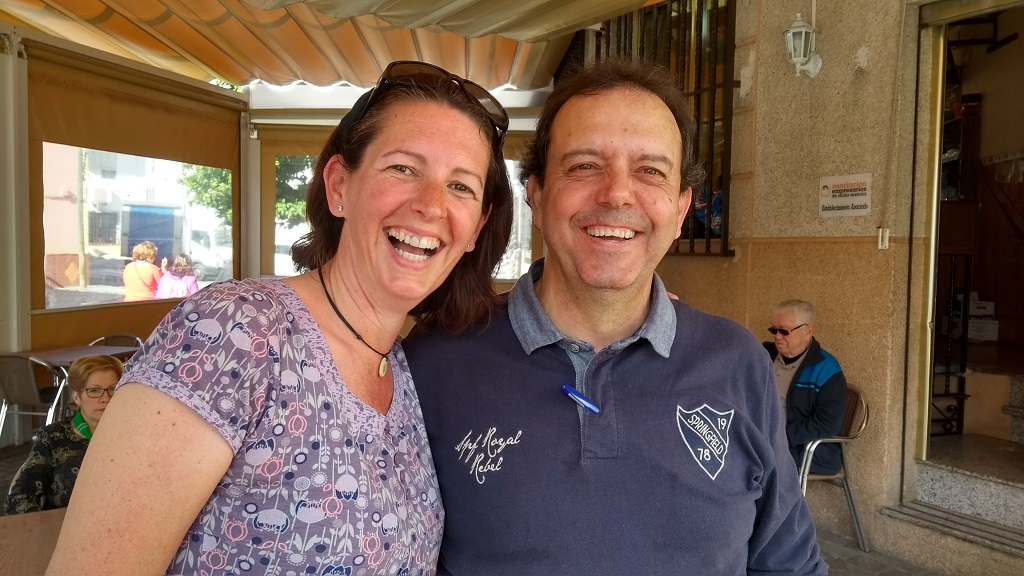
Doctors, knees and olives aside, what else have we been up to? Not a huge amount. The weather’s fantastic down here at the moment. Too good in fact: it’s knocking on 24°C when it should be closer to 4°C. Paco and many of his compatriots had to pull out part way through a half marathon race yesterday, as it was just too hot (in the summer he can only run before 6am or late at night – daytime running would literally kill you). We’re not complaining though, and have been enjoying the warmth. I’ve run a fair bit, along the via verde and up into the beautiful gorge and natural park behind the pretty village of Zaheros a couple of miles south of us. We’ve eaten in La Cantina, the restaurant next to us which was once the town’s train station and which has been heaving for days (we had to book in). Sat beside the open fire (it’s still cool out of the sun), I opted for cochinillo (suckling pig) while Ju chose a large fish croquette. Both were tasty, swimming in garlic oil, but the cochinillo was tough when I expected something which fell apart. Ju’s massive fish finger won the meal contest!
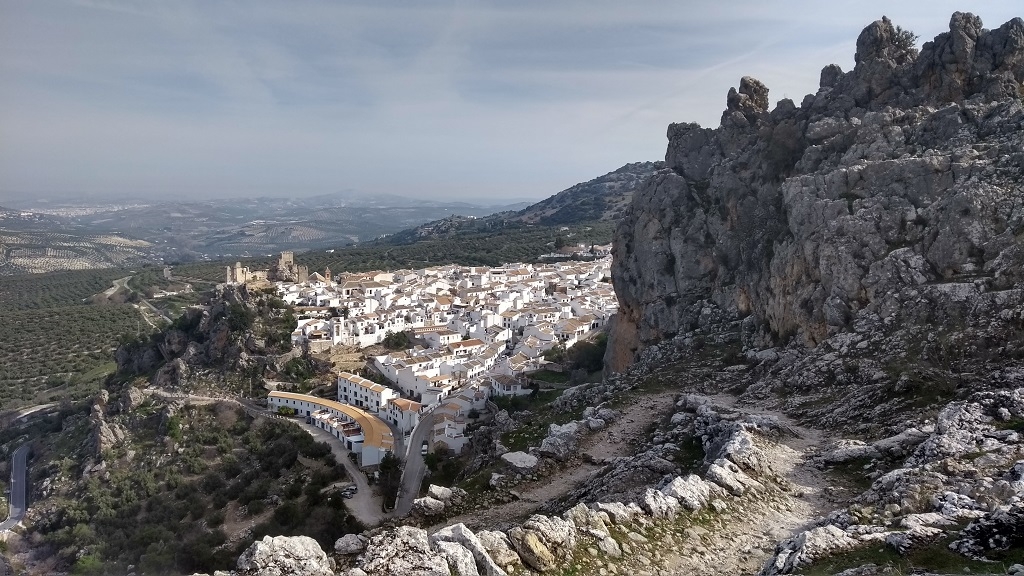
The plan now is to stay here tonight, then head up to the motorhome aire in central Córdoba tomorrow so we can visit the world-famous Mezquita (the mosque-turned-cathedral). It feels good to us to mix up the ‘big sights’ with the ‘small sights’, both important in their own way. We’ve another three weeks or so before our tunnel home at the end of March, so it’s time to turn north and start ambling our way across parts of the country which we’ve never seen.
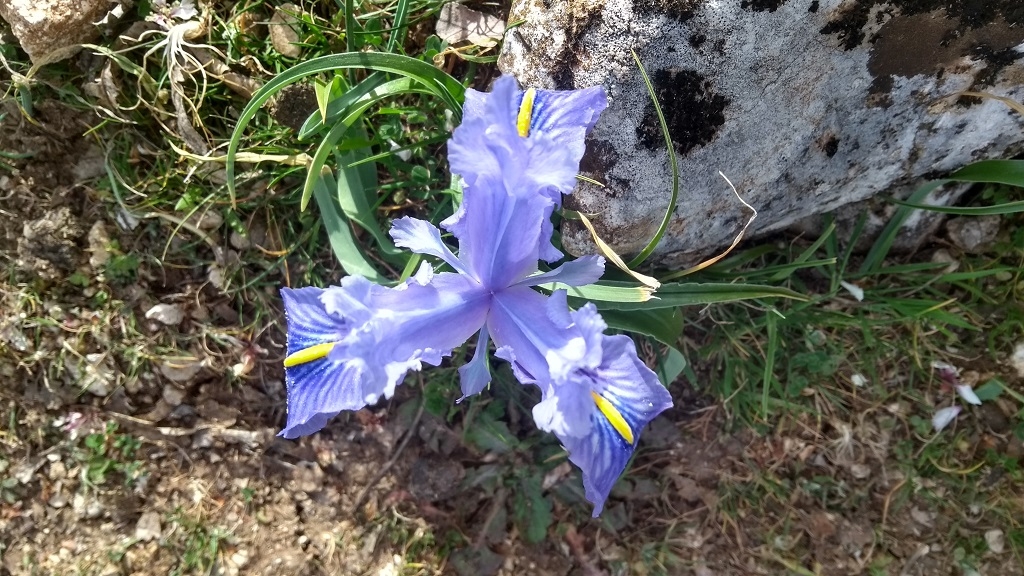
Cheers, Jay


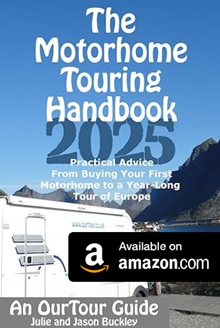
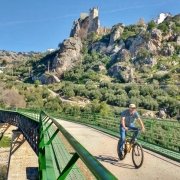
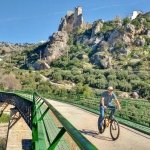
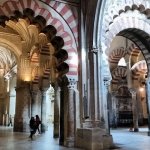
Hope you mend soon Ju and can get back to running. Enjoy the weather – I was marshalling at the Anglesey half marathon yesterday – wet and chilly but the runners still waved and smiled.
Paul
Hi guys – sorry to hear you’ve been crocked Julie, but glad to hear the Spanish system is looking after you. Our experience is that they are much more chilled out than the French, who demand payment (apparently EHIC only covers 80% of costs?!) before they let you leave the premises. I’ve never known anyone charged for emergency care in Spain, unlike the French ski resorts which seem to delight in charging for absolutely everything, at a much inflated cost.
We’re finding the Spanish so much more happy to chat and generally be neighbourly – so much nicer than the UK!
Glad to hear Julie is in the mend. Also great to hear you experienced so much kindness & care from the Spanish. Funny after we were talking about Mikes Greek hospital experience from last year! Hope Julie recovers quickly and can get those running shoes back on soon.
Enjoy your next few weeks. It’ll pass way too quickly so enjoy every day.
V, M & P xx
I was thinking of Mike when they were filling my knee with iodine. It stung, but would be nothing compared to what Mike went through which helped me shut up and not squeal. Hope you had a fantastic weekend x
Hi guys. Glad your both ok. Andrea and I are coming out to Spain in the beginning of May. Have you heard much talk about Brexit and can you give any advice. Regards john
Hi John. We’ve written a couple of posts on the potential changes Brexit might make to motorhome travel, but until a deal is agreed or the UK leaves without a deal, not much is certain, especially in terms of the dates each area might be affected. Here are the posts anyway; hope they’re of some use.
https://ourtour.co.uk/home/brexit-considerations-for-a-european-motorhome-tour/
https://ourtour.co.uk/home/the-death-of-the-year-long-motorhome-tour-of-europe/
Cheers, Jay
Great update.
We’ve had to use emergency services in Spain, France, England and Italy and all of them where excellent.
We also use to buy Pauls medication from Spain and paid $3.50 for it, which would cost $50 at home and you needed an script at home.
We where lucky tho, because Paul had EHIC and the Australian Medicare system has reciprocal agreements with most EU countries.
So glad all will be healed in time and no major injuries
First time commenting on here, but have to leave a little message and wish you a speedy recovery, Julie. Look after yourself and hope you’re back on running soon, don’t let it knock your confidence. You got this!
Hope you make a speedy recovery Julie. I love reading your blog.
Hi to both of you, glad you are on the mend Ju. We are both thinking about going to Italy this year after our 1st adventure last year traveling through France and Spain. Can you please advise us of any major differences we may experience traveling in Italy to France and Spain.
Kind regards Chris and Keith
Hi guys. The main difference for us is the increased stress level when driving. It’s not a huge problem, but it’s definitely harder to cross Italy unless you stick to the toll roads, which themselves can be in poorer condition to those in France and Spain. There is a good network of aires (sostas) and you can often park for free in quieter places. Expect the quality of the sostas to be lower than those in Spain, and much lower than France, especially in the south. When buying fuel, there are two prices shown: one for self service and a higher one for attendant service, choose the right pump. All in all, my personal take on Italy is that the driving (and parking) makes it difficult to relax, the graffiti and urban sprawl are unsightly, but the fun way in which the locals live and the outstanding architecture, art, landscapes and historic sights make all the hassle worth it. Have a great time. Cheers, Jay